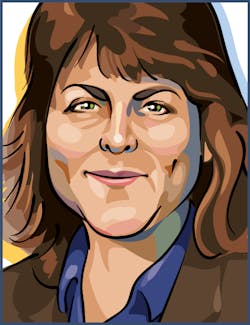
Organizers of the International Year of Light 2015 (IYOL 2015) define photonics as "the science of light" and say on their website, "The word Photonics appeared around 1960, when the laser was invented by Theodore Maiman."
Further internet searching finds another reference describing how the word "photonics" came to be in a European Commission CORDIS overview that states, "The term Photonics was coined in 1967 by Pierre Aigrain, a French scientist (you can read his interesting obituary at http://scitation.aip.org/content/aip/magazine/physicstoday/article/56/9/10.1063/1.1620842), who gave the following definition: 'Photonics is the science of the harnessing of light. Photonics encompasses the generation of light, the detection of light, the management of light through guidance, manipulation, and amplification, and most importantly, its utilisation for the benefit of mankind.'"
A paragraph in a book entitled Photonic Technology and Industrial Policy by Ernest Sternberg says: As used in its present sense, "la photonique" seems to have made an early appearance in a 1973 article by the French physicist Pierre Aigrain. "I believe," Aigrain wrote, "that tomorrow, that is to say in 1990, photonics will play an important part in the transmission of information ... Photonics is a technology of tomorrow." The Sternberg book goes on to say, "Also in the present sense, the word photonics begins to appear in print in English around 1981 in press releases and annual reports of Bell Laboratories, in internal publications of Hughes Aircraft Corp., and in the more general press in an article in the Wall Street Journal."
And interestingly enough, the Merriam-Webster dictionary definition of photonics says that the first known use of the word was in 1952.
But whether it was 1952, 1967, 1973, or 1981, the term "photonics" is relatively new to our world. And despite the overarching presence of photonic technologies in our everyday world, many people don't even know what the word means. So what's in a name like "photonics"? Plenty. Take a look at this video from SPIE and you'll see what I mean:
Indeed, life without photonics—while it wouldn't be impossible—would be much different. Those little packets of photons from which the name photonics emerges—are crucial to improved communication, medical breakthroughs, industrial materials processing, and to helping us speed through the grocery store line thanks to laser bar-code scanners.
When people ask me about my job and I tell them I work for Laser Focus World, most of them can of course relate to the word "laser" (although most of them think about laser weapons only). But when I tell them the magazine is not only about lasers, but it's more broadly concerned with "photonics", people often look perplexed and ask "what is photonics?" just like the parents did in the SPIE video above.
We in the photonics industry have a long way to go if we want the word photonics to elicit the same fundamental response and level of understanding from individuals as does the word electronics. Unfortunately, that may never happen; after all, Photonics 21 estimated the global photonics industry market size at $470 billion dollars in 2011, whereas the global electronics market in the U.S. alone in 2012 was larger at $704 billion dollars according to Statista.
While it's important to market the word properly in order to gain funding for photonics, even IYOL 2015 has embraced the word "light" as has the National Photonics Initiative, which highlights the word "light" in its statement of purpose: "The National Photonics Initiative (NPI) is a collaborative alliance among industry, academia and government seeking to raise awareness of photonics—the application of light ... " Personally, I think the International Year of Light sounds much more exciting (and no doubt more illuminating for the average person) than the International Year of Photonics; however, Pierre Aigrain would probably disagree.

Gail Overton | Senior Editor (2004-2020)
Gail has more than 30 years of engineering, marketing, product management, and editorial experience in the photonics and optical communications industry. Before joining the staff at Laser Focus World in 2004, she held many product management and product marketing roles in the fiber-optics industry, most notably at Hughes (El Segundo, CA), GTE Labs (Waltham, MA), Corning (Corning, NY), Photon Kinetics (Beaverton, OR), and Newport Corporation (Irvine, CA). During her marketing career, Gail published articles in WDM Solutions and Sensors magazine and traveled internationally to conduct product and sales training. Gail received her BS degree in physics, with an emphasis in optics, from San Diego State University in San Diego, CA in May 1986.